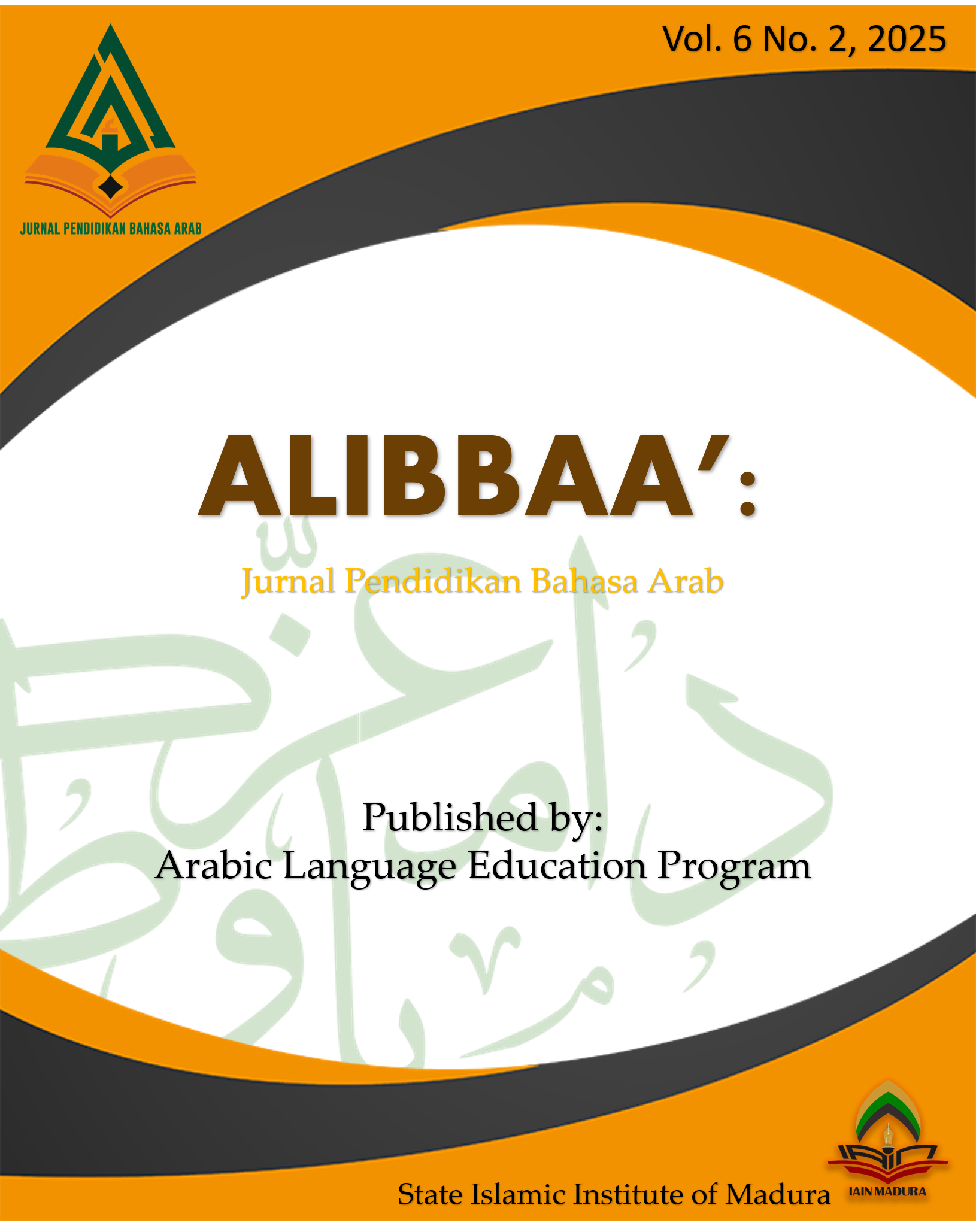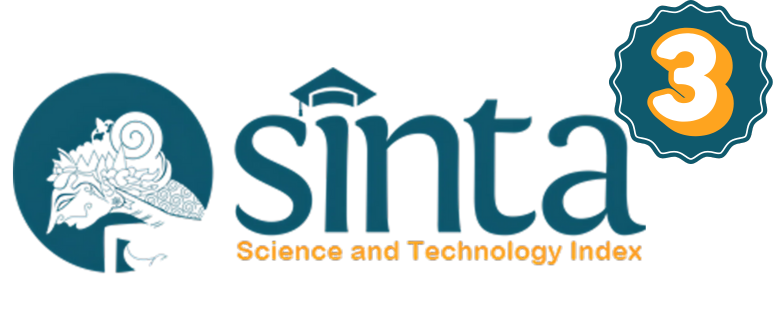Arabic Language Curriculum in Southeast Asia: A Comparative Analysis of Indonesia and the Philippines
 Abstract views: 292
,
Abstract views: 292
,
 pdf downloads: 222
pdf downloads: 222
Abstract
This study aims to compare the design, implementation, and evaluation of Arabic language curricula in Indonesia and the Philippines, as two national Arabic language curriculum systems in the Southeast Asian region. Employing a qualitative approach with a comparative case study design, the study utilizes document analysis as its primary method. Core data sources include Indonesia’s 2013 Curriculum and Merdeka Curriculum, as well as the Arabic Language and Islamic Values Education (ALIVE) program in the Philippines. The analysis applies Posner’s five dimensions of curriculum; purposes, content, organization, implementation, and evaluation. The findings indicate that Indonesia’s curricula are centered on classical textual literacy and grammatical precision, yet lack adequate attention to oral communication skills. In contrast, the ALIVE curriculum promotes functional speaking ability from early stages but is limited in linguistic depth and assessment standardization. Both approaches demonstrate strengths and limitations in fostering comprehensive Arabic language competence. The study recommends the development of a more balanced curriculum integrating classical literacy and oral proficiency, supported by targeted teacher training and context-sensitive evaluation frameworks.
Downloads
References
-, KHADIGUIA ONTOK-BALAH. “A Systematic Review on the Implementation of the Arabic Language and Islamic Values Education (ALIVE) Program in the Philippines: Implications on the Educational Psychology Practice.” International Journal For Multidisciplinary Research 5, no. 6 (December 30, 2023). https://doi.org/10.36948/ijfmr.2023.v05i06.11290.
Afriati, Intan, Zuhir Ratmansyah, Ardiman Fadhil, and Yudistira Iriandi Lesmana. “Grammar and Translation Methods in Arabic Language Learning: Theory and Practice.” MADINA : Journal of Islamic Studies 2, no. 1 (June 30, 2025): 1–8. https://doi.org/10.62945/madina.v2i1.741.
Akmaliyah, Akmaliyah, Yasir Hudzaifah, Nisrina Ulfah, and Muhammad Ibnu Pamungkas. “Child-Friendly Teaching Approach for Arabic Language in Indonesian Islamic Boarding School.” International Journal of Language Education, March 30, 2021, 501–14. https://doi.org/10.26858/ijole.v5i1.15297.
Amalia, Nabila Nailil, M. Abdul Hamid, Zakiyah Arifa, and Asbarin. “Analysis of the Arabic Language Textbook for Junior High School from the Perspective of the Education, Standards, Curiculum, and Assesment Agency (BSKAP).” Alibbaa’: Jurnal Pendidikan Bahasa Arab 5, no. 2 (July 31, 2024): 243–67. https://doi.org/10.19105/ajpba.v5i2.13941.
Bowen, Glenn A. “Document Analysis as a Qualitative Research Method.” Qualitative Research Journal 9, no. 2 (August 3, 2009): 27–40. https://doi.org/10.3316/QRJ0902027.
Brown, Gavin T. L., Atta Gebril, and Michalis P. Michaelides. “Teachers’ Conceptions of Assessment: A Global Phenomenon or a Global Localism.” Frontiers in Education 4 (March 7, 2019). https://doi.org/10.3389/feduc.2019.00016.
Faizin, Khoirul, and Ismail Ismail. “HISTORY OF ARABIC CURRICULUM DEVELOPMENT IN INDONESIA.” Lahjah Arabiyah: Jurnal Bahasa Arab Dan Pendidikan Bahasa Arab 4, no. 2 (July 26, 2023): 103–17. https://doi.org/10.35316/lahjah.v4i2.103-117.
Guleng, Marlon Pontino, Razaleigh Muhamat@Kawangit, and Zulkefli Aini. “Issues on Islamic Education in the Philippines.” Al-Irsyad: Journal of Islamic and Contemporary Issues 2, no. 1 (June 20, 2017): 1–12. https://doi.org/10.53840/alirsyad.v2i1.22.
Hadi, Nurul, Nuri Alvina, and Khaled Radhouani. “Ta’zîzu Dâfi’iyyati Thullâbi Riyâdh al-Athfâl Li Tathwîri Mahârât al-Lughah al-’Arabiyyah al-Syafawiyyah Min Khilâli Barâmiji al-Ta’lîm al-Mukatstsaf.” Alibbaa’: Jurnal Pendidikan Bahasa Arab 5, no. 2 (July 31, 2024): 189–214. https://doi.org/10.19105/ajpba.v5i2.12195.
Hamsira M. Harad, and Benjier H. Arriola. “Challenges on the Implementation of Arabic Language and Islamic Values Education (ALIVE) Program.” International Journal of Multidisciplinary Research and Publications 4, no. 9 (2022): 17–26.
———. “Implementation of Arabic Language and Islamic Values Education (ALIVE).” THE American Journal of Humanities and Social Sciences Research (THE AJHSSR) 5, no. 3 (2022): 47–57.
Hasanah, Mamluatul, Ahmad Mubaligh, Risna Rianti Sari, Alfiatus Syarofah, and Agung Prasetyo. “ARABIC PERFORMANCE CURRICULLUM DEVELOPMENT: RECONSTRUCTION BASED ON ACTFL AND DOUGLAS BROWN PERSPECTIVE.” Ijaz Arabi Journal of Arabic Learning 4, no. 3 (October 30, 2021). https://doi.org/10.18860/ijazarabi.v4i3.11900.
Hidayat, Ahmad Fadhel Syakir, Akhirudin Akhirudin, and Sutiah Sutiah. “Curriculum Management Characteristics in Arabic Language (A Comparative Study of Curriculum Documents in Arabic Language Education at UINSI Samarinda and UIN FAS Bengkulu).” Lisanan Arabiya: Jurnal Pendidikan Bahasa Arab 7, no. 2 (December 30, 2023): 143–60. https://doi.org/10.32699/liar.v7i2.4882.
Hilmi, Danial, Nur Toifah, and Halimatus Sa`diyah. “Curriculum Development Strategy for Independent Learning in Arabic Language Learning at PTKIN in East Java.” LISANIA: Journal of Arabic Education and Literature 7, no. 2 (December 14, 2023): 159–77. https://doi.org/10.18326/lisania.v7i2.159-177.
Holandyah, Muhamad, Dian Erlina, Lenny Marzulina, and Fitria Rembulan Ramadhani. “Grammar Instruction in Communicative Language Teaching Classrooms: Student Teachers’ Perceptions.” Edukasi: Jurnal Pendidikan Dan Pengajaran, June 30, 2021, 66–77. https://doi.org/10.19109/ejpp.v8i1.8510.
Lewicka Magdalena, and Waszau Anna. “Analysis of Textbooks for Teaching Arabic as a Foreign Language in Terms of the Cultural Curriculum.” Universal Journal of Educational Research 5, no. 1 (2017): 36–44.
Llmia, Siti Fahimatul, Rizqi Karimatul Khilmi, Cahya Edi Setyawan, and Maskanah Maskanah. “Critical Review of the 2023 Tenth Grade Arabic Textbook for Madrasah Aliyah under Kurikulum Merdeka.” Alsina : Journal of Arabic Studies 5, no. 2 (August 31, 2023): 231–56. https://doi.org/10.21580/alsina.5.2.20893.
Mahyudin Ritonga, Hendro Widodo, Munirah, and Talqis Nurdianto. “Arabic Language Learning Reconstruction as a Response To Strengthen Al-Islam Studies at Higher Education.” International Journal of Evaluation and Research in Education (IJERE) 10, no. 1 (March 2021): 355–63.
Merriam, Sharan B. Qualitative Research: A Guide to Design and Implementation. Jossey-Bass, 2009.
Nur’aini, Rara, and Mohamad Zaka Al Farisi. “The Observation of Arabic Language Differentiation in the 2013 Curriculum and the ‘Merdeka’ Curriculum.” Abjadia : International Journal of Education 8, no. 1 (July 3, 2023): 62–78. https://doi.org/10.18860/abj.v8i1.22359.
———. “The Observation of Arabic Language Differentiation in the 2013 Curriculum and the ‘Merdeka’ Curriculum.” Abjadia : International Journal of Education 8, no. 1 (July 3, 2023): 62–78. https://doi.org/10.18860/abj.v8i1.22359.
Posner, G. J. Analyzing the Curriculum (3rd Ed.). New York: McGraw-Hill, 2004.
Rahman, Rifqi Aulia, and Indah Kumalasari. “The Dynamics of Arabic Language Curriculum at Arabic Education Department of UIN Sunan Kalijaga Yogyakarta.” LISANIA: Journal of Arabic Education and Literature 4, no. 2 (December 31, 2020): 140–62. https://doi.org/10.18326/lisania.v4i2.140-162.
Ritonga, Mahyudin, Asrina Asrina, Rizka Widayanti, Fitri Alrasi, Julhadi Julhadi, and Syaflin Halim. “Analysis of Arabic Language Learning at Higher Education Institutions with Multi-Religion Students.” Universal Journal of Educational Research 8, no. 9 (September 2020): 4333–39. https://doi.org/10.13189/ujer.2020.080960.
Ritonga, Mahyudin, Hendro Widodo, Munirah Munirah, and Talqis Nurdianto. “Arabic Language Learning Reconstruction as a Response to Strengthen Al-Islam Studies at Higher Education.” International Journal of Evaluation and Research in Education (IJERE) 10, no. 1 (March 1, 2021): 355. https://doi.org/10.11591/ijere.v10i1.20747.
Rosyadi, Ahmad Mizan, and Muhammad Shokhibul Hidayah. “Penerapan Metode Grammar Translation Untuk Baca-Tulis Di MA As-Sunniyyah Jember.” Al-Fusha : Arabic Language Education Journal 4, no. 1 (January 30, 2022): 30–36. https://doi.org/10.62097/alfusha.v4i1.748.
Rufaiqoh, Elok, Sutiah Sutiah, Samsul Ulum, Muhammad ‘Ainul Yaqin, Ahmad Nuruddin, and Mohammed Ahmed Mohammmed Aloraini. “An Analysis of Arabic Language Curriculum Development in Indonesia.” Jurnal Al-Maqayis 11, no. 1 (June 22, 2024): 1–16. https://doi.org/10.18592/jams.v11i1.9843.
Sali, Abdul Haiy A. “Pedagogical Praxis: Muslim-Filipino Madrasah Teachers’ Conceptuality of Instructional Process.” IAFOR Journal of Education 8, no. 4 (November 27, 2020): 115–31. https://doi.org/10.22492/ije.8.4.07.
Sali, Abdul Haiy Abdul, and Arlyne Canales Marasigan. “Madrasah Education Program Implementation in the Philippines: An Exploratory Case Study.” International Journal of Comparative Education and Development 22, no. 3 (June 29, 2020): 201–17. https://doi.org/10.1108/IJCED-06-2019-0034.
Salindab, Rita L., and Allan A. Maglantay. “Arabic Language and Islamic Values Education (ALIVE) Implementation, Pedagogical Practices of Alive Teachers and Learners’ Performance.” International Journal of Research and Innovation in Social Science IX, no. IV (April 29, 2025): 1137–50. https://doi.org/10.47772/IJRISS.2025.90400087.
SAMID, Amina. “Filipinler’de İslami Eğitim ve Medrese Okullarının Gelişimi.” International Journal of Political Studies, August 31, 2022. https://doi.org/10.25272/icps.1139650.
Sodiq, Syamsul, and Lutfiyah Alindah. “The Hidden Indonesian Language Literacy Curriculum In Arabic Language Textbooks For Islamic Junior High School.” Ijaz Arabi Journal of Arabic Learning 7, no. 1 (February 29, 2024). https://doi.org/10.18860/ijazarabi.v7i1.25049.
Sukiman, Uki, Ghazali Zainuddin, Yoyo Yoyo, and Siti Rosilawati Ramlan. “Arabic Neologisms in Indonesian and Malaysian Arabic Media.” Al-Jami’ah: Journal of Islamic Studies 61, no. 2 (December 22, 2023): 365–92. https://doi.org/10.14421/ajis.2023.612.365-392.
Susiawati, Iis, and Moch. Hasyim Fanirin. “ARABIC LEARNING AT MADRASAH ALIYAH BASED ON THE 2013 CURRICULUM.” Arabiyat : Jurnal Pendidikan Bahasa Arab Dan Kebahasaaraban 7, no. 2 (December 30, 2020): 251–63. https://doi.org/10.15408/a.v7i2.17444.
Yin, R. K. Case Study Research and Applications: Design and Methods (6th Ed.). SAGE Publications, 2018.
Zulfa Tsalitsatul Muna, Nur Hidayah, Muhajir, Ashley Le Souef, and Alyssa Devaney. “Mind Mapping as an Innovation in Reading and Writing Learning: A Study of Understanding Arabic Texts.” Alibbaa’: Jurnal Pendidikan Bahasa Arab 6, no. 1 (January 30, 2025): 120–37. https://doi.org/10.19105/ajpba.v6i1.15963.
Authors who publish with this journal agree to the following terms:
a. Authors retain copyright and grant the journal right of first publication with the work simultaneously licensed under a Creative Commons Attribution License that allows others to share the work with an acknowledgement of the work's authorship and initial publication in this journal.
b. Authors are able to enter into separate, additional contractual arrangements for the non-exclusive distribution of the journal's published version of the work (e.g., post it to an institutional repository or publish it in a book), with an acknowledgement of its initial publication in this journal.
c. Authors are permitted and encouraged to post their work online (e.g., in institutional repositories or on their website) prior to and during the submission process, as it can lead to productive exchanges, as well as earlier and greater citation of published work (See The Effect of Open Access).
Alibbaa': Jurnal Pendidikan Bahasa Arab have CC-BY-SA or an equivalent license as the optimal license for the publication, distribution, use, and reuse of scholarly work.
In developing strategy and setting priorities, Alibbaa': Jurnal Pendidikan Bahasa Arab recognize that free access is better than priced access, libre access is better than free access, and libre under CC-BY-SA or the equivalent is better than libre under more restrictive open licenses. We should achieve what we can when we can. We should not delay achieving free in order to achieve libre, and we should not stop with free when we can achieve libre.

Alibbaa': Jurnal Pendidikan Bahasa Arab is licensed under a Creative Commons Attribution 4.0 International License
You are free to:
- Share — copy and redistribute the material in any medium or format
- Adapt — remix, transform, and build upon the material for any purpose, even commercially.
- The licensor cannot revoke these freedoms as long as you follow the license terms.











